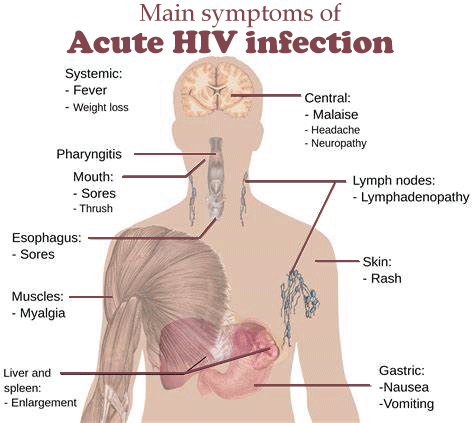Difference between HIV and AIDSHIVHIV stands for Human Immunodeficiency Viruses. It is the combination of two viruses that infect the human body. It is transmitted sexually, and hence is a sexually transmitted disease that can spread coming in the contact with semen, vaginal fluid, pre-ejaculation, and blood. It can also be transferred without any sexual contact from an infected mother to a baby during pregnancy or breast milk. HIV paves the path for AIDS. Having vaginal or anal sex with the infected person is the main cause of spreading this infection. Also, coming in contact with used syringes and needles. 
HIV treatmentART is a therapy used to help persons with this infection to live a healthy and long life. ART refers to Antiretroviral Therapy. It prevents the infection from multiplying and reduces the risk of HIV. This therapy also reduces the risk of transmission of such disease. HIV fights with CD4 infection-fighting cells and destroys them due to which patients with this infection are unable to fight such infections and cancers. Leaving it untreated, can lead to AIDS. Spreading the infection from an infected mother to baby during pregnancy, birth or breastfeeding is referred to as prenatal transmission. Use of condoms while having sex every time, limiting sexual patterns and avoiding the share of used injections can help in reducing the risk of the infection. People with a higher risk of having such an infection in near future can be provided with PrEP prevention options to reduce the same. It involves the consumption of some oral pills. Baby formula is given to babies whose mother is infected with HIV. Less or no HIV infection prevents the immune system and also AIDS. A viral load test is used to check the presence of this infection in the human body. An undetectable viral load test indicates no or negligible infection. Symptoms of HIVHaving likely symptoms to that of flu-like fever, chills and rash are the symptoms of this infection. These symptoms sometimes last from a few days to some weeks. Night sweats, muscle aches, soar throat, mouth ulcers, fatigue ness and swollen lymph nodes are some of its other symptoms too. Having these symptoms does not necessarily means HIV infection as these signs can also be exhibited by other diseases. At the very initial stage of the infection, HIV multiplies at a fast rate and then gradually at a lower rate. Some humans do not show any symptoms which can be inferred as acute HIV infection. Some extreme symptoms do not show up earlier but lead to AIDS. It includes a bad immune system and a body with opportunistic infections. HIV often leads to AIDS in 10 years or more from getting the infection, but exceptions do exist in whom it grows gradually. Its transmission is very much possible at any stage of the infection even from the one having no symptoms. Stages of HIVThere are 3 stages of this infection: 1. Acute HIV infection, 2. Chronic HIV infection, and 3. Acquired Immunodeficiency Syndrome, often called AIDS.
AIDSAIDS stands for Acquired Immunodeficiency Syndrome. This is caused by HIV. The last stage of HIV is known as AIDS. It is a disease adopted by an already infected person which turns the immunity of a person to an immuno-deficient condition. There is not a single symptom that indicates AIDS, rather there are multiple or can be said a set of combinations of symptoms that can be seen in a person infected by AIDS. HIV often leads to AIDS in 10 years or more from getting the infection, but exceptions do exist in whom it grows gradually. Its transmission is very much possible at any stage of the infection even from the one having no symptoms. Difference between HIV and AIDS
Next TopicDifference between
|
 For Videos Join Our Youtube Channel: Join Now
For Videos Join Our Youtube Channel: Join Now
Feedback
- Send your Feedback to [email protected]
Help Others, Please Share










